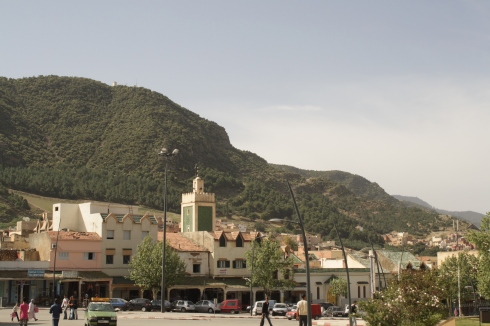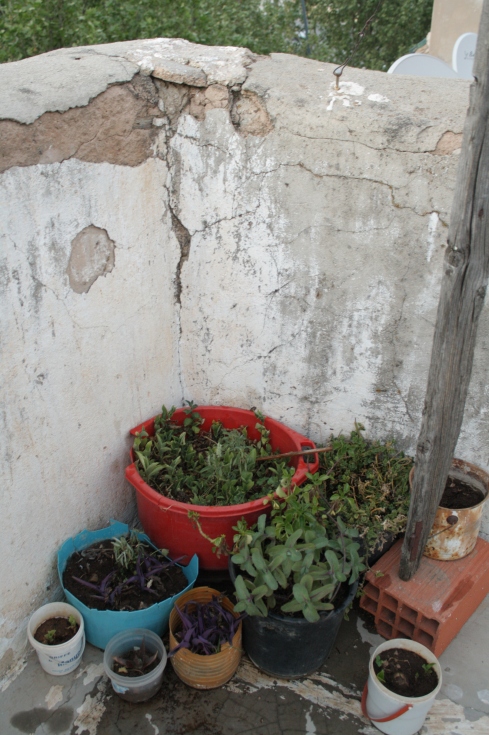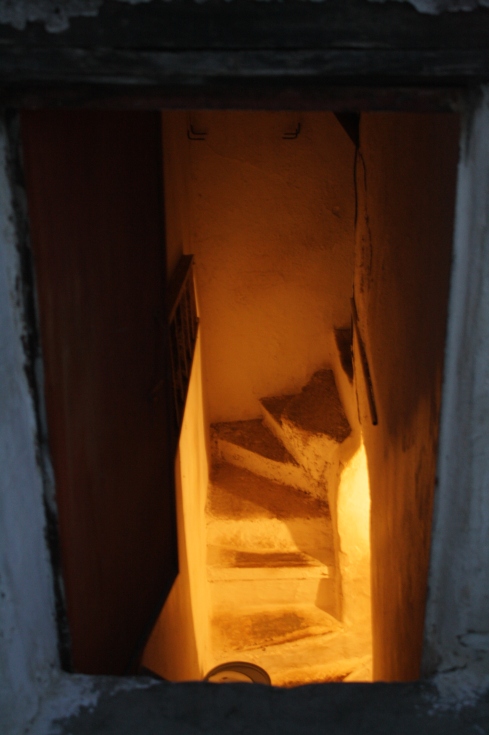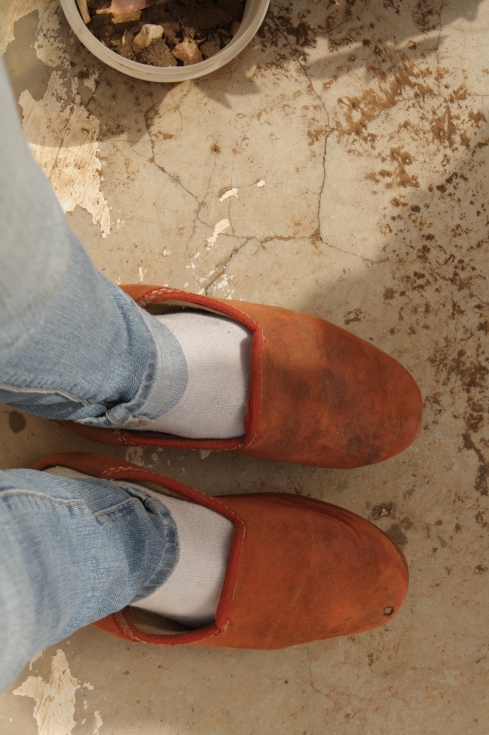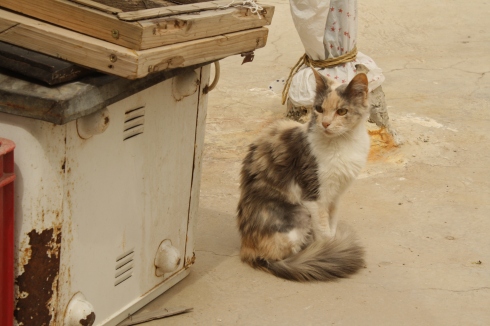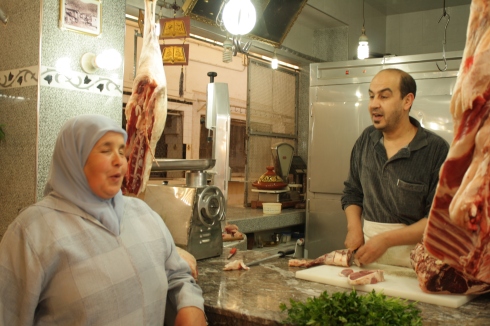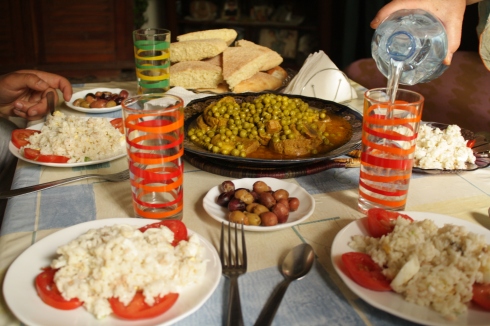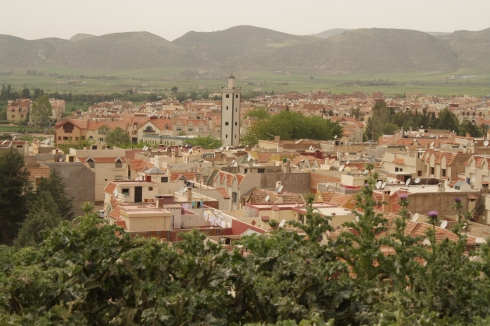“You’re going to the mawlid? Take care of yourselves.”
It was at the end of probably the longest cab ride I’ve taken in Alexandria. The twists and turns of the ride had taken us deeper and deeper into the city, and after a while I had started to wake up from my fascinated daze of watching the people and animals and shops go by and notice that the scenery was definitely getting sha3bier. To be honest I’m not sure how to translate the word sha3by. It can mean “popular” in some contexts, but in most cases the meaning translates more literally “of the people.” Of and pertaining to the real people of Egypt. Not the privileged, highly educated, Westernized elite who drive around Alexandria in cars and sit in the classy “clubs” sipping soda, but the crusty Ahwagees who bring coffee and shisha to the street-side cafe-sitters, the men in galabiyya and shibshib who sell melons from their donkey cart, and the kids who play football in the street between the vegetable stalls. The women who are never without an armload of baby, laundry, food. The people!*
With this realization, I felt that fluttery “uh-oh” type of nervousness in my chest. What if our cab driver had forgotten about the four Americans he picked up from the other end of town, and was now just driving home? Improbable. But the twinge of anxiety also had to do with the fact that we had not the slightest clue where we were going. Earlier that evening (around 11pm), Monica, Mae, Jordan, and I had been doing some chilling on the balcony when Nada came to tell us about a Sufi festival that was happening that night from midnight until dawn! They were leaving now, come meet us! they said. We got our stuff together (our smallest bills in cash and cell phones) and set off. First we got dropped off at a street carnival in Bahry…all the way at the Western end of Alex. We wandered around for a few minutes, got a little creeped out by the painted faces and eerily swinging rides, and called Nada, only to find out we were completely in the wrong place. We actually needed to go to Aras al-Aynab, to the Abu Al-akhlas mosque. We didn’t know the name of the area, but the first cab driver we flagged down seemed to know the place.
The last few minutes of our lengthy ride took us across a small bridge over a little canal, and up a dead-end street, at the end of which we could see the towering spire of a mosque, decorated with brightly colored flashing bulbs. Al-mawlid, stated our driver. The festival. You’re going there? Be careful. After more words of caution from our cabbie, we knew we were in for an interesting night.
We walked up the dirt road to the humongous temporary structure that had been constructed next to the mosque. 5-meter beams supported colorful tarps decorated with patterns and designs of famous mosques and prayers in silver and gold letters. We could see inside the giant tent, shifting throngs of people. Should we go back? asked Monica. No one answered. We had already been drawn in to the colors and sounds of the festival.
We entered the tent and immediately found ourselves in the middle of a dance floor. I dodged the flailing arms of one whirling dancer, and we worked our way through the crowd of people in various states of dance. One woman turned in the center of a group of people, her arms outstretched and her head thrown back, laughing. The dancers were in a constant state of motion; many looked unaware or unconcerned of their surroundings. The space was lit by strands of colored flashing bulbs strung across the high ceilings, and strings and strings of fluorescent bulbs hanging vertically, sometimes covered with colored tape. Most of the crowd was made up of men, but as we progressed further into the crowd we could see that only a portion of the tent was designated for dancing, and in the rest of the space, men and women sat on chairs around the edges, smoking shisha, drinking tea, or just watching the dance. Most people wore long robes, for men the galabiyya, for women the abayya. There were also of course tons of kids running around, wearing shiny foil party hats and playing with noise-making horns and puppets and colorful jewlery. There were stalls set up to buy all of these colorful party favors, as well as scarves, sweets, and tea or coffee.
As we broke free of the dancing masses, we spotted the rest of our group! Daniel, Fatima, Kamelya, and Nada were with some Egyptian friends who guided us all into another huge tented room, with pillows laid out around the walls and clusters of men and the occasional woman leaning up against them, talking and drinking tea. We we invited in and sat down, barefoot, and were brought sweet tea. The entire time we were at the festival, people, especially children, stared at us incredulously…”Foreigners?” And sometimes got brave…”Welcome! You speak Arabic!? What’s your name?” And after learning your name, would insist on a handshake, and in some cases, peek into the tent from outside and call “JO!! JO!! JO! JO!!” until someone looked up and waved.
We chatted with our friends and the groups of Egyptians around us and learned that this mawlid, which literally means birthday, commemorates the life and death of a great sufi imam….actually a pretty recent one who was from Alexandria and died in 1979. Sufism is a mystical dimension of Islam, and Sufis celebrate the lives of their great leaders and saints with these mawlids, sometimes making long pilgrimages to visit the burial sites of the greatest saints. Sufis are also the group famed for practicing the whirling meditative dance of the Whirling Dervishes…hence all the dancing, I guess!
After a while, we were told the music was about to start again, and we went out to watch, this time from a bit of a distance. There was a stage set up at the front of the room, and a turbaned singer was beginning with a low, slow song. People began to gather…swaying slowly with the singers words. The song slowly sped up, gaining momentum, and more instruments and drums joined in. I was amazed at the singer’s stamina…there didn’t seem to be a break in between songs; it was like one song, changing and getting faster and more complex as time went on. And as the song got faster and more intense, so did the movements of the dancers at the front of the room, until all of a sudden at a high point in the song, all of the dancers were in sync, tilted, whirling, and all I could see was the turning rise and fall of their outstretched arms over the crowd.
I also began watching a man who was sitting in a chair directly in front of where we were standing. He was galabiyya-ed, turbaned; white hair and wrinkled brown skin. He was flicking through his prayer beads, passing each bead through his fingers, in time with the music, getting faster and faster. Smoking huge clouds of shisha. He looked back at us, his eyes rimmed with dark liner.
We decided to keep wandering through the rest of the festival to see what else we could see, and ended up getting stopped and offered even more tea, so we sat down, drank more tea, and talked to more people, until we finally got up to leave at almost 4am and were begged to stay for longer.
We found a taxi and made it home in once piece, with lots of new sounds, smells, sights and experiences to think about. I was amazed on the way back by how bustling the city was, after 4am! People were still out in the streets, buying and selling fruit and vegetables, barber shops still had their doors open and customers going in and out, men were still sitting on the curbs enjoying their shishas, and women and children were still out and about, running around and going about their business.
Luckily, Pizza Roma was also still open in Sporting when we got back, so we processed and debriefed over pizza and fateer. Yum. And what an intense night. I wish i had had my camera with me; I’m already having a hard time believing some of the images I’m remembering.
*A note on generalizations. If there’s one thing I’ve realized in Egypt it is that I should never kid myself into thinking I can make assumptions about this society or its people. Or any society or any people. Every time I start to think I’ve understood or learned something, I meet someone that makes me completely rethink all of my previous thoughts. All observations are just observations. I don’t want to generalize or make assumptions, but I do want to describe. Because how can I not…the place is neat! There we go. Another generalization.
Tags: adventures, alexandria, culture, dancing, egypt, islam, mawlid, meeting people, sufism

